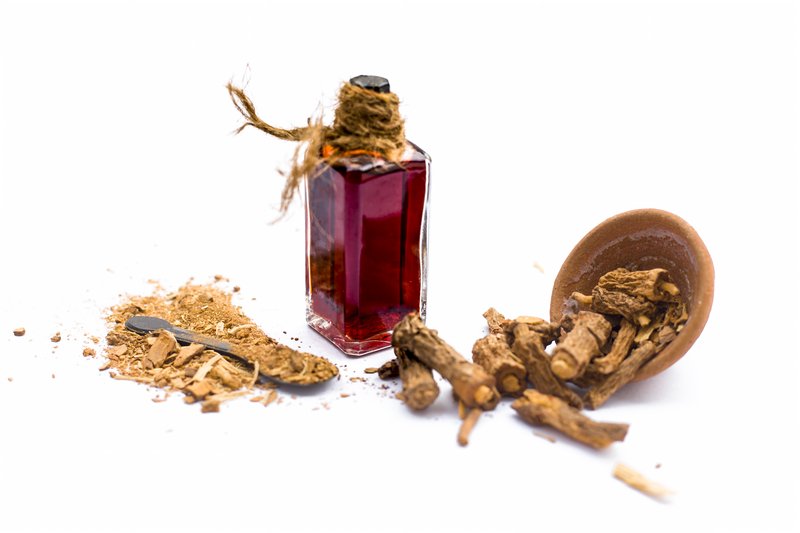Sarsaparilla: See the Health Benefits, Risks and How to Use

If you’re like me, the word sarsaparilla—besides being hard to spell—brings with it special memories of long-ago family vacations. Many of us remember “bellying up to the bar” at an old-timey Western saloon and ordering the sarsaparilla soft drink, which tasted somewhat like root beer or birch beer.
As we sipped the legend of the soft drink that was popularized in the early 1800s—when it was believed to be a health tonic of sorts—we imagined what life would have been like with no TV or modern-day conveniences. A few years ago, my husband and I even took our son to the ghost town South Pass City in Wyoming where we shared a sarsaparilla.
Yet surprisingly, the beverage popularized in the United States often wasn’t even made from sarsaparilla. Instead, it was brewed with a blend of birch bark and sassafras with added licorice, wintergreen, and other spices, and the sodas you find today likely don’t contain any of that. With few exceptions, they’re more likely a mixture of natural and artificial flavorings that are similar in flavor. That is, of course, if you can find an old-fashioned sarsaparilla at all.
In today’s Sarsaparilla article, we will cover:
- What is Sarsaparilla?
- The Health Benefits of Sarsaparilla
- The Side Effects of Sarsaparilla
- How to Use Sarsaparilla
What is Sarsaparilla?
So, if it’s isn’t really the drink we remember from childhood, what is sarsaparilla?
Sarsaparilla is a plant that grows in tropical and temperate climates, such as South America, Jamaica, the Caribbean, Mexico, Honduras, and the West Indies. It’s from the Smilax plant genus, it has long, woody vines, and there are over 300 species worldwide. 1
Throughout the world, sarsaparilla goes by many different names, such as smilax, zarzaparilla, and smilace. In Southeast Asian countries, you can still find a soft drink made with Smilax ornata and other plants where it’s called sarsi.
Historically, indigenous people used sarsaparilla root as a tea to help ease arthritis and other joint issues, as well as help with skin issues like psoriasis and eczema. It was introduced to the Europeans by Native Americans, and the word “sarsaparilla” is actually derived from the Spanish words zarza (which means bramble or bush), parr (which means vine), and illa (which means small). So, it translates to “small bramble vine,” which is a pretty apt description.
Sarsaparilla was later used for people suffering from leprosy and syphilis, as well as an aphrodisiac. In the 19th century, it was also advertised in the U.S. as a remedy for skin and blood problems and often referred to as a “blood purifier.”
Health Benefits of Sarsaparilla
Sarsaparilla is loaded with a variety of vitamins and minerals like vitamins A, C, and D, B vitamins, iron, manganese, silicon, copper, zinc, iodine, and more. And it provides a number of non-nutritive bioactive compounds that may benefit the body, including saponins, plant sterols, flavonoid antioxidants, kaempferol, and quercetin. It’s believed to help support healthy levels of inflammation as well as provide antioxidant properties.
Unfortunately, research on its effects is rather limited or dated at this time. So, while the touted benefits vary widely and are certainly interesting, more research is needed to discover how effective it truly is. That said, here are some of the most commonly purported health benefits of sarsaparilla:
- Relieving joint pain due to arthritis, gout, and other inflammatory joint conditions.
- Fighting free radicals and oxidative stress as a potent antioxidant.
- Protecting the skin and potentially slowing the process of aging by protecting collagen production. 2
- Boosting the immune system.
- Easing skin lesions caused by psoriasis due to the steroid-like compounds (i.e., sterols) in sarsaparilla known as sarsaponin. 3,4
- Acting as an antimicrobial or antibacterial agent to help fight infection. 5
- Acting as a mild antifungal agent. 6
- Supporting healthy levels of inflammation due to an ability to bind to endotoxins. 7, 8
- Relieving coughs and colds by helping clear mucus.
- Inhibiting cancer tumor growth. 9,10,11,12
- Supporting liver health due to flavonoid-rich rhizomes 13 and promoting urine production and perspiration, which may also help ease fluid retention. 14
- Supporting kidney function and health. 15
- Improving the bioavailability and absorption of other herbs and supplements.
- Enhancing sex drive by supporting hormonal balance. However, there is no evidence that it boosts testosterone or helps build muscle.
- Cleansing like soap due to the saponins that form bubbles and lather when mixed with water.
Side Effects of Sarsaparilla
While there are concerns about consuming sassafras (which is occasionally mistaken for sarsaparilla) due to its high content of the poisonous safrole, there are no known side effects for sarsaparilla, which is generally considered safe. However, some sensitive individuals may experience stomach irritation due to the saponins. Because it may increase the bioavailability and absorption of other compounds, it may also affect blood levels of medications you’re taking. And due to a lack of testing, it is not recommended for pregnant or breastfeeding women.
Also look for a quality, reputable source of sarsaparilla as some has been falsely marketed and adulterated (or, spiked) with “fake” ingredients like Hemidesmus indicus (Indian sarsaparilla), which doesn’t provide the same active compounds.
Finally, sarsaparilla may increase urine output, so if you’re dehydrated, it’s best to avoid it.
How to Use Sarsaparilla
Even if you are able to find a soda that actually contains sarsaparilla, that’s not the best way to consume it, as that vehicle is typically loaded with unnecessary (and unhealthy) sugars and often artificial flavors. Instead, you can boil a cup of water with one teaspoon of pure, dried roots to make a soothing tea. Steep the roots for around 30 minutes and then drink it several times a day. It can also be found in capsules and other supplements, typically combined with other herbs. In that case, make sure it’s from a reputable brand and follow the instructions.
While much of the research on sarsaparilla is preliminary (or from bygone times), it is an intriguing root that has a long, fun history and a wide variety of promising benefits.



 7 Signs Your Body is Seriously Low on Collagen (not just wrinkles)
7 Signs Your Body is Seriously Low on Collagen (not just wrinkles) Health Expert: "Turmeric Doesn't Work (unless...)"
Health Expert: "Turmeric Doesn't Work (unless...)" 3 Warning Signs Your Probiotic Supplement is a Total Waste
3 Warning Signs Your Probiotic Supplement is a Total Waste

